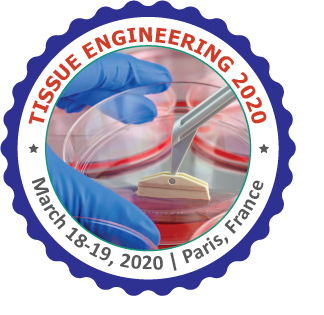
Daneshi Sajad
Shiraz University of Medical Sciences, Iran
Title: Decellularized liver transplant could be recellularized in rat partial hepatectomy model
Biography
Biography: Daneshi Sajad
Abstract
In situ recellularization of the liver decellularized scaffold is a potential therapeutic alternative for liver transplantation. We aimed to develop an in situ procedure for recellularization of the rat liver using sodium lauryl ether sulfate (SLES) compared with Triton X-100/SDS. Rat liver specimens were rinsed with PBS, decellularized with either Triton X-100/SDS or SLES, and finally rinsed by distilled water. The efficiency of decellularized liver scaffolds was evaluated by histological, confocal Raman microscopy, histochemical staining and DNA quantification assessments. Finally, in vivo studies were done to assess the biocompatibility of the liver scaffold by serum biochemical parameters and the recellularization capacity by histological and immunohistochemistry staining. Findings confirmed the preservation of extracellular matrix (ECM) components such as reticular, collagen, glycosaminoglycans and neutral carbohydrates in both Triton X-100/SDS- and SLES-treated livers. Hoechst, feulgen, Haematoxylin and eosin and DNA quantification assessments confirmed complete genetic content removal. The serological parameters showed no adverse impact on the liver functions. Transplantation of SLES-treated cell-free decellularized liver showed extensive neovascularization along with migration of the fibrocytes and adipocytes and some immune cells. Also, immunohistochemical staining showed that the oval cells, stellate cells, cholangiocytes and hepatocytes invaded extensively into the graft. It is concluded that SLES can be considered as a promising alternative in the liver decellularization process, and the transplanted decellularized liver can appropriately be revascularized and regenerated.

